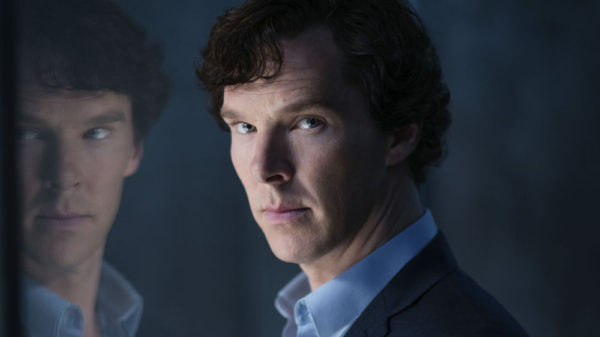With the lowest viewing figures since the acclaimed BBC drama began, ‘The Final Problem’ begged the question: has Sherlock lost the plot?
The elaborate storylines of the fourth season finale stretched the bounds of credibility to its limits, and whether its adventurous approach to story-telling was a bold or a foolish move depends on your point of view, with critical opinion ranging from “incomprehensible” to “dazzling”.
In the original books by Sir Arthur Conan Doyle, Sherrinford is the mysterious third brother of Mycroft and Holmes, but here the third sibling became a long-lost sister called Eurus, and Sherrinford was the code name of the Alcatraz-style island where she was incarcerated, with only a violin for company (plus a crucial five-minute visit from arch-villain Moriarty.)
So how did Eurus, named after the mythical Greek god of the East wind, manage to escape from solitary confinement on an island surrounded by craggy rocks and choppy seas?
These wind-swept cliffs were no match for the treacherous heights of her mental agility. Her cell was full of signs warning visitors and guards not to go anywhere near her, yet predictably they did, falling under her charismatic spell. Having hypnotised them all to do her bidding, she was able to escape any physical confines with relative ease.
Quite how a young girl turns into an irredeemable psychotic killer is hard to imagine, but this was explained by the fact that she was blessed, or cursed, with special abilities, and suffered from jealousy which drove her to vengeful acts. Yet her parents, putting in a brief appearance, seemed like quite normal, emotionally well-balanced individuals.
The real mystery here is how Mr and Mrs Holmes sweet Holmes managed to produce three such extraordinarily intelligent offspring, two skilled in problem-solving and one skilled in hatching fiendish schemes for the other two to solve, creating a sort of symbiotic sibling triad.
One woman to bring chaos, two men to restore order– I’m sure the writers’ intention was to create a strong female character, but consider how this set-up might look from a feminist perspective. Or possibly the two writers Steven Moffat and Mark Gatiss (who plays Mycroft) meant it as a tribute to their mutual muse.
Finally, all was revealed and neatly, if implausibly, resolved. Unlike previous season which ended on a huge cliffhanger, this one saw Holmes and Watson leaping gazelle-like out of Rathbone Place, in a tribute to classic Sherlock Holmes actor Basil Rathbone. This was a change of spirit animal for Watson, whose cries of grief at his wife’s death in a previous episode have been compared to the baying of an elk.
Despite the lack of cliffhanger, the season still ends with viewers left in suspense – wondering whether this particular Holmes and Watson will ever return. If the two lead actors ever manage to find a Baker Street-shaped window in their busy schedules, it’s guaranteed that their next adventure will be far from elementary.
Written by Angela Lord.

